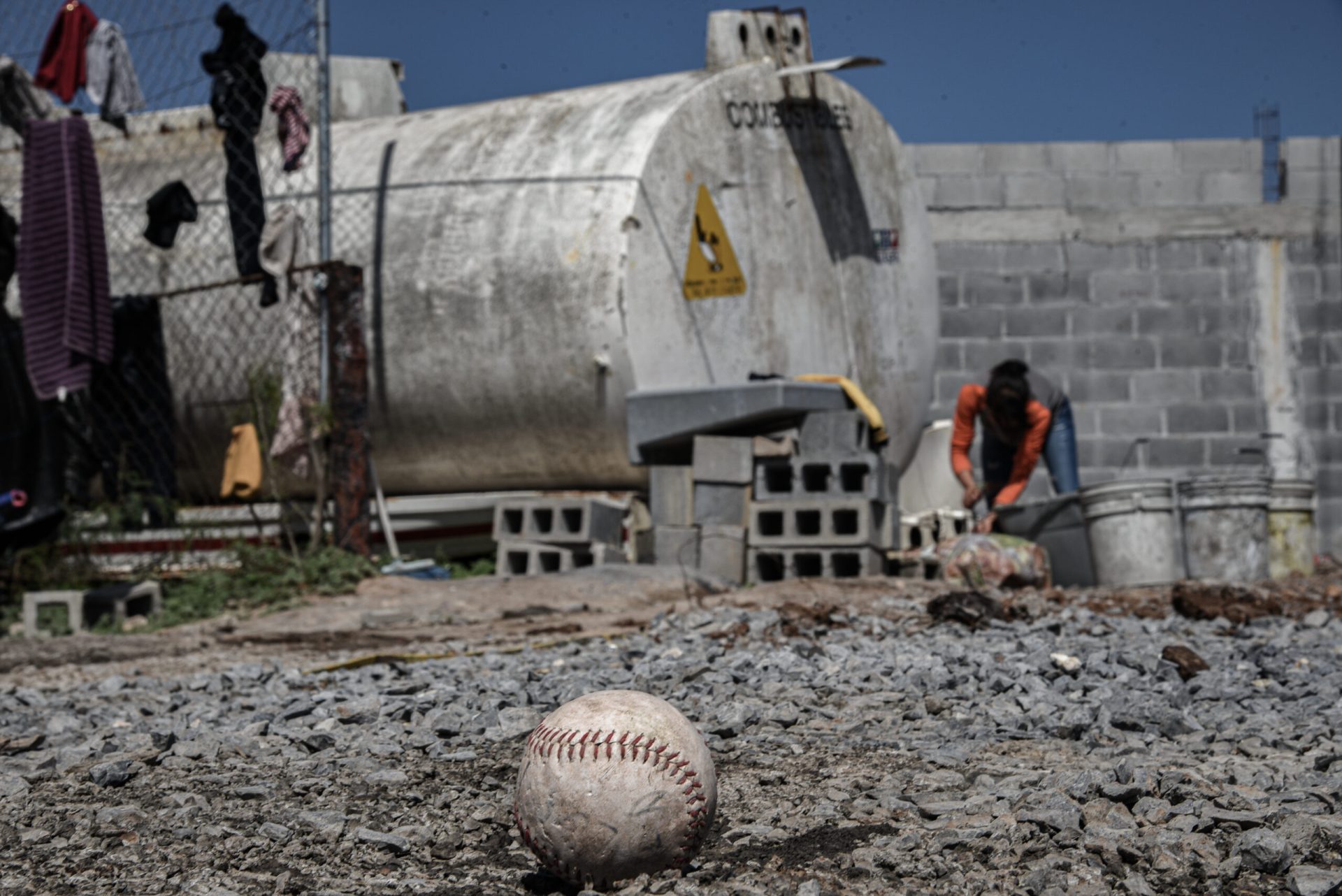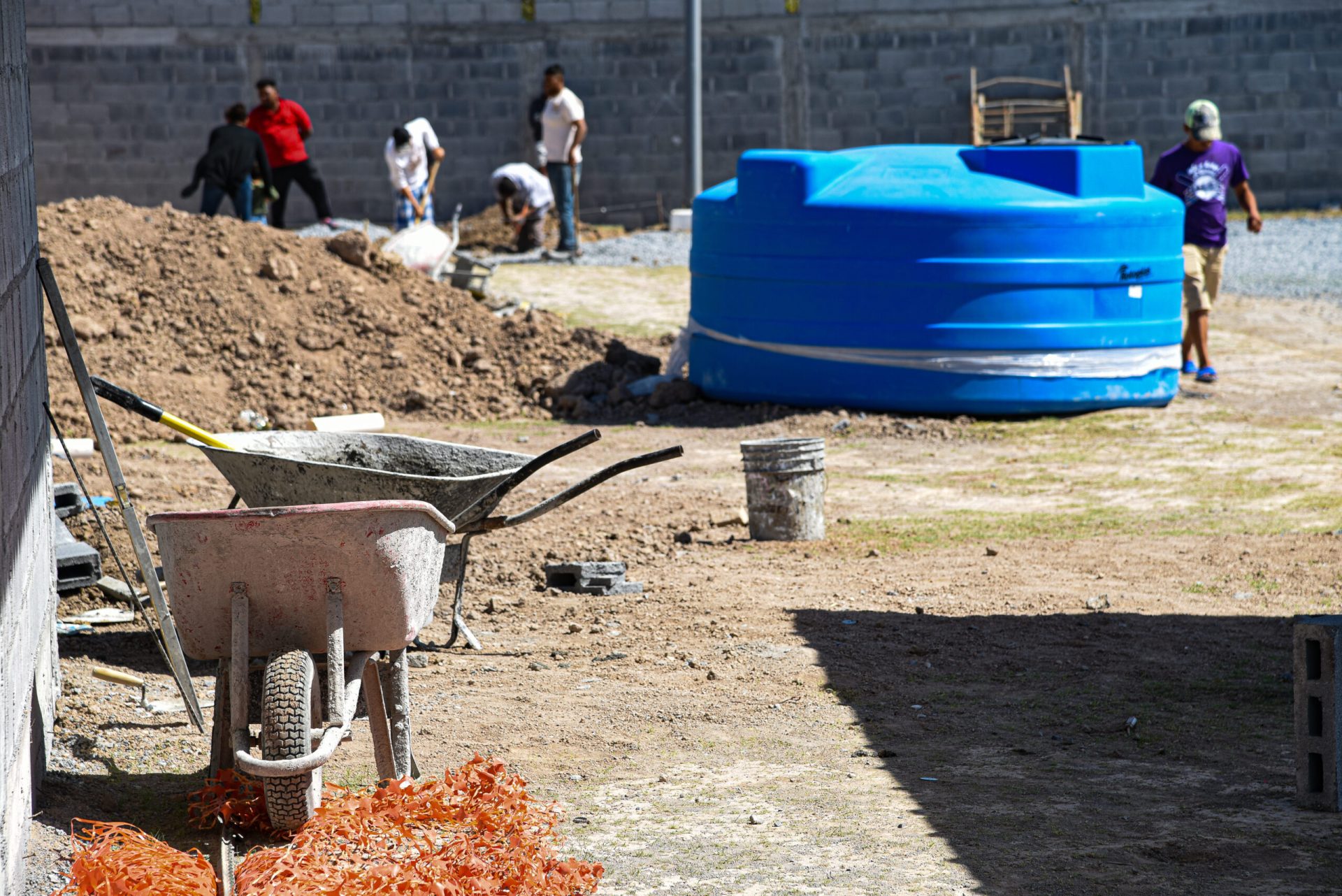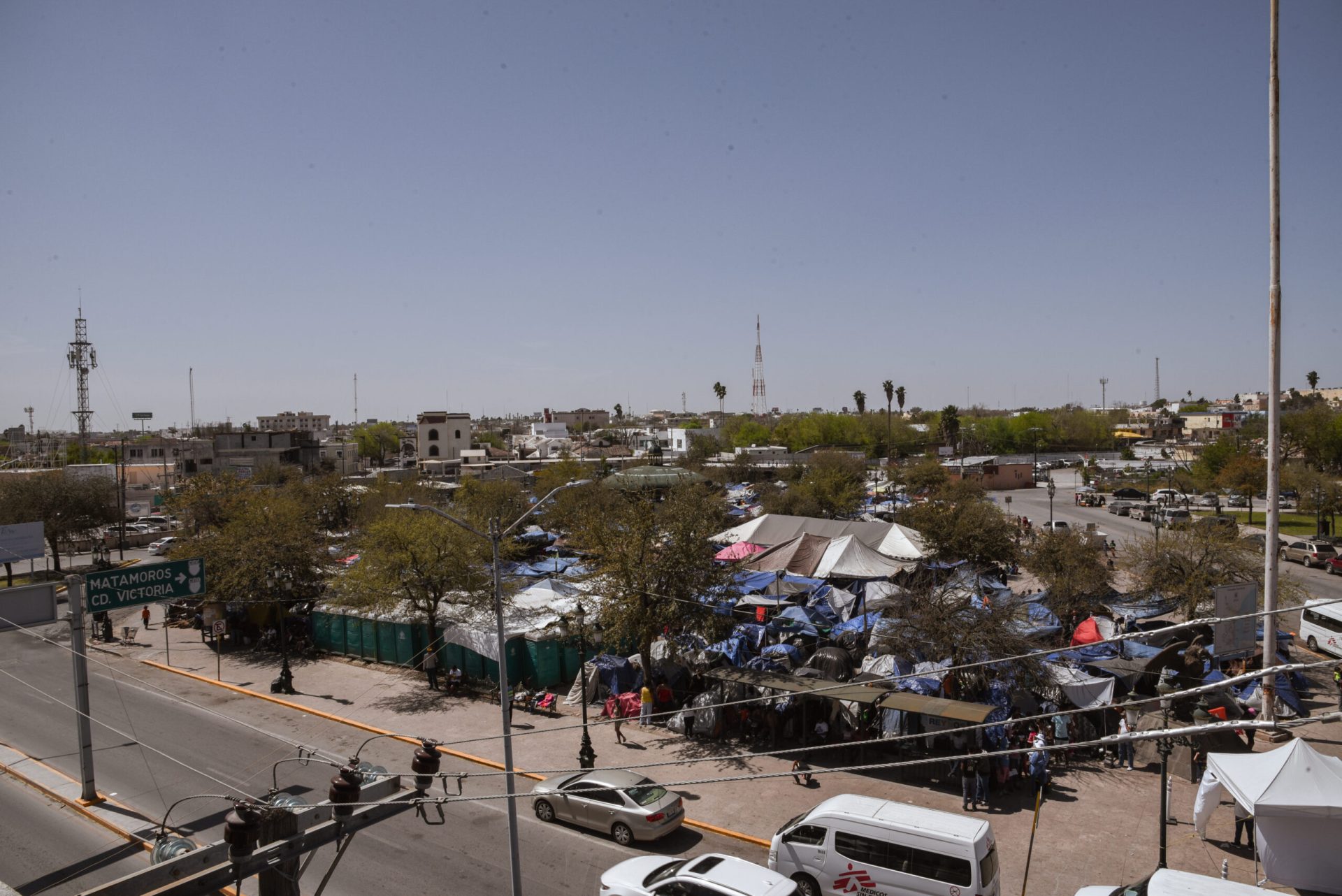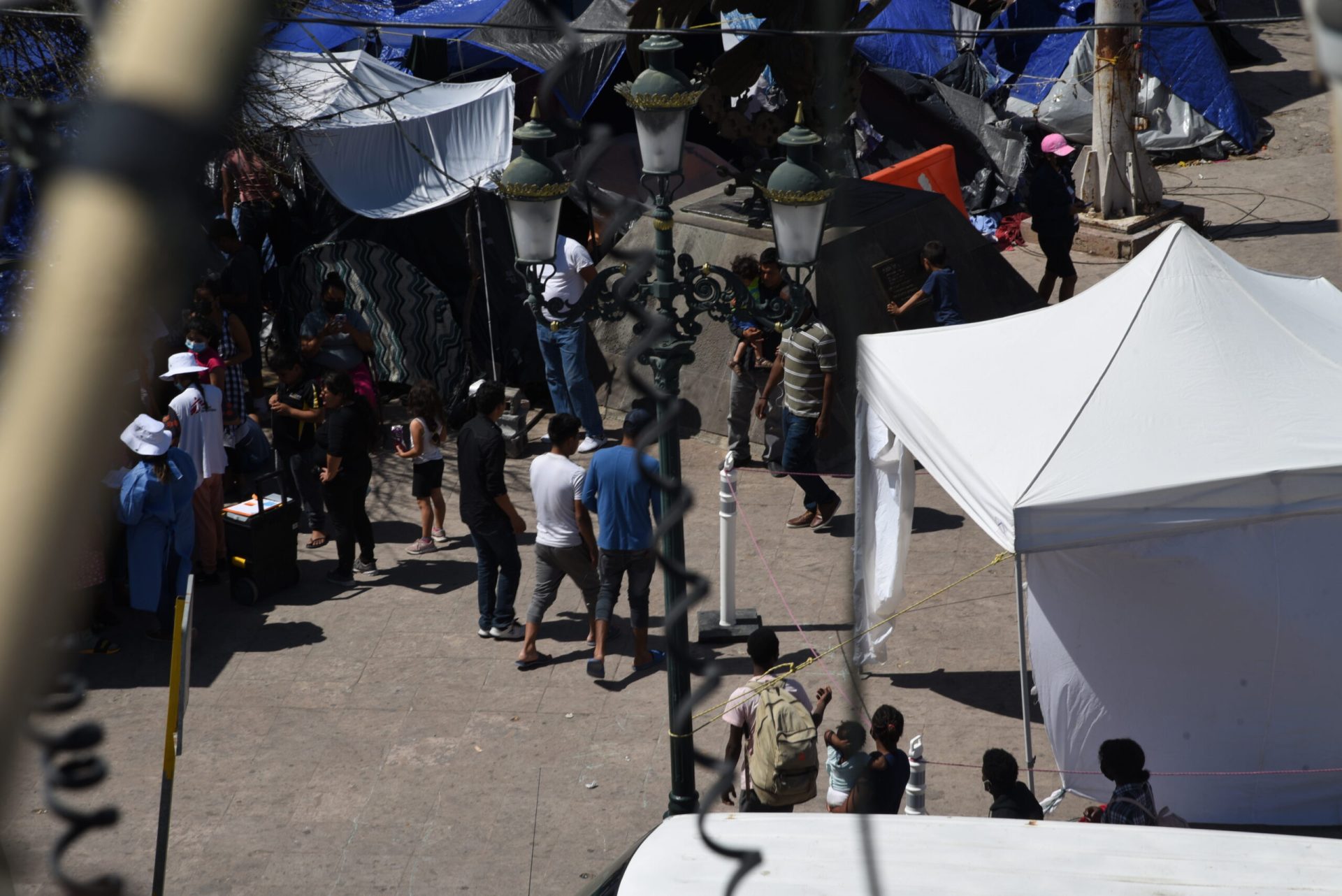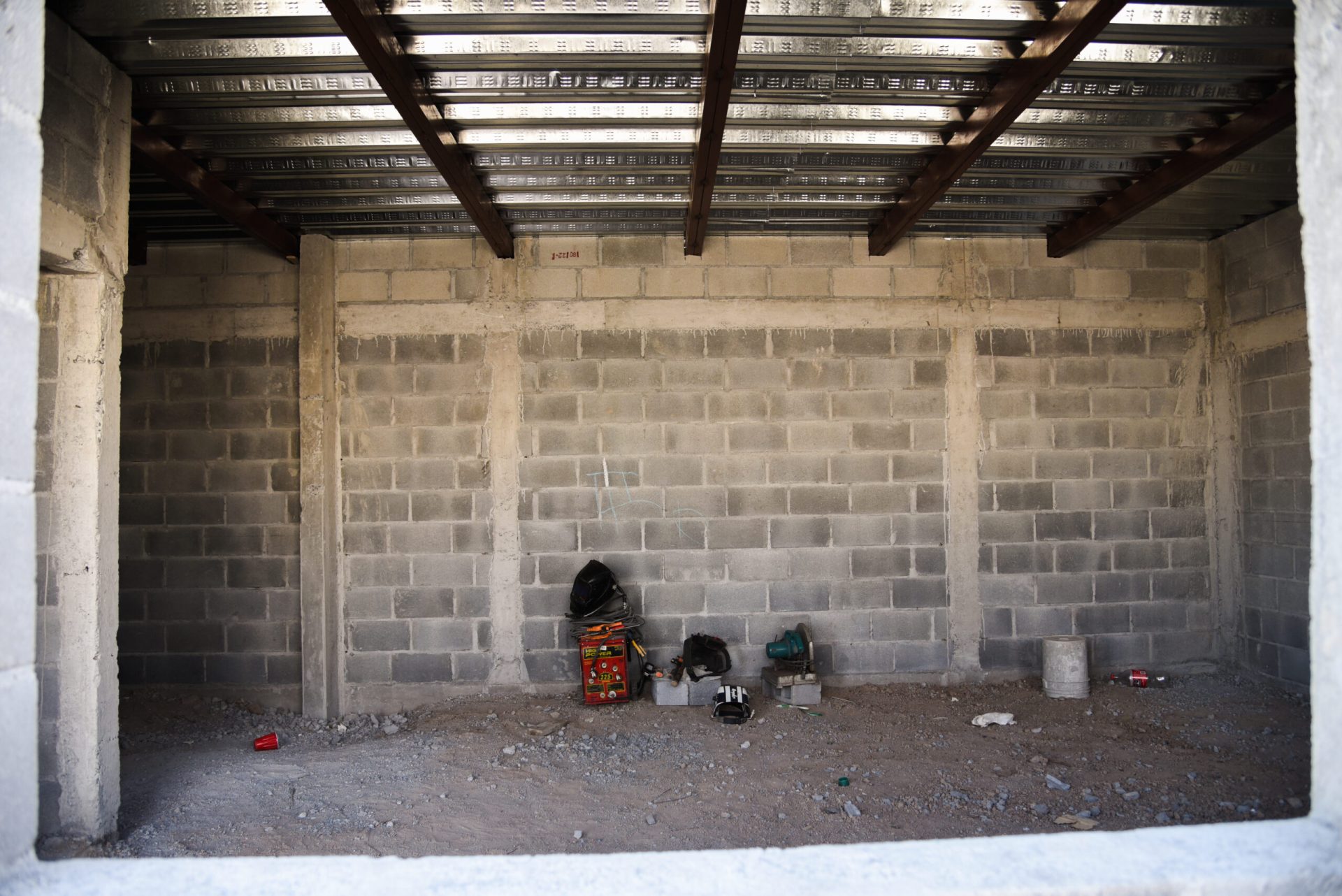Pressure is mounting in Reynosa as the U.S. prepares to change immigration policies at the border that could draw thousands to the region. Simultaneously, a shelter meant to replace the migrant encampment in the city faces significant construction delays as rumors attempt to displace them before its completion.
Sitting at the Reynosa construction site of the new shelter, Senda de Vida II, a group from the Committee for the Coordination of Migrants sat at a plastic table next to a pile of concrete bricks 6 feet off the ground before dozens of reporters Tuesday.
“¡Nos falta mucho!” Pastor Hector Silva, committee leader and the director of Reynosa’s largest migrant shelter, Senda de Vida, said.

Construction at a baseball field in Reynosa to build Senda de Vida II began in January. The shelter is meant to replace the encampment that formed a block away from the international bridge and move families off the streets and into a shelter with lighting, fencing and electricity — basic needs not guaranteed at the makeshift shelter formed at the plaza.
Though builders are working at a steady pace, resources are lacking.
“We need light posts. We need a large transformer. We also need this ditch to be dug all the way through to the entrance,” Silva said, pointing at the drainage ditch that ran halfway through the grounds. “We need to finish this office. We need to create a dining space. The city still needs to fix the street that leads to this field, because that was a commitment the mayor’s office made in this project. And we need to construct a school here for the children.”
Men worked in the background of the news conference mixing cement, digging the drainage ditch, or lifting aluminum siding into the bed of a trailer.
In spite of the considerable work that lays ahead, a few days ago, a city official, who was not named by the committee, went to the encampment of migrants and told them they would need to move out by March 17.

Pandemonium broke throughout the tents crowding the plaza. Organizations helping the migrants responded.
“The functionary was out there trying to incite people to come out here when the conditions are not ready yet,” Claudia Romero, a representative with the Children’s Humanitarian Aid in Reynosa association, said. “That’s why we had this news conference, to clarify to all journalists that there’s no date… Look at the conditions we’re in. It would be like bringing them to the same thing.”
Between the migrants in the plaza and those living at Senda de Vida’s shelter, Silva estimated there’s about 4,000 people waiting in Reynosa for the U.S. to restore immigration policies that allow them to request asylum.
Momentum swings back and forth stretching the construction project timeframe, a city official said at the meeting.
“We’ve knocked on a lot of doors so that this happens and so that it can happen as quickly as possible. Why has it taken long? Political reasons,” the official said, though he did not expand on the statements.
Romero rejected the city’s message that urges the public and charitable organizations to stop taking food to the migrants at the plaza.
“We can’t leave them without eating. That’s inhumane,” Romero rebuffed.
Reports of child abuse continue to surface from the encampment. Recently, Romero received a video of a migrant girl sent by her parents to beg for money at the bridge. Other reports of sexual abuse and suicidal attempts among children have circulated for months.
Moving migrants into the new shelter could mitigate the trauma experienced at the encampment which has no formal leadership. But timing is critical.
“If they start coming now, this will get out of our control,” Romero said, referring to a premature move.
Pastor Silva concurred.
“They won’t be coming until all of this is in order,” he said.
Migrant families and single women will be prioritized and no one will be forced to go to the new site.
While the shelter will provide a space for those currently affected by policies that keep migrants from seeking asylum, many more are expected to come when those pandemic-induced policies are removed.
“We are not ready. We don’t have the resources … like food or tents,” Silva said. “If we’re struggling to provide for the 3,000 or 4,000 migrants who are here and at the shelter, what’s going to happen when that number grows to 20,000 or 30,000? It’s going to get complicated.”
Currently, there is no estimated construction due date for the new shelter.


